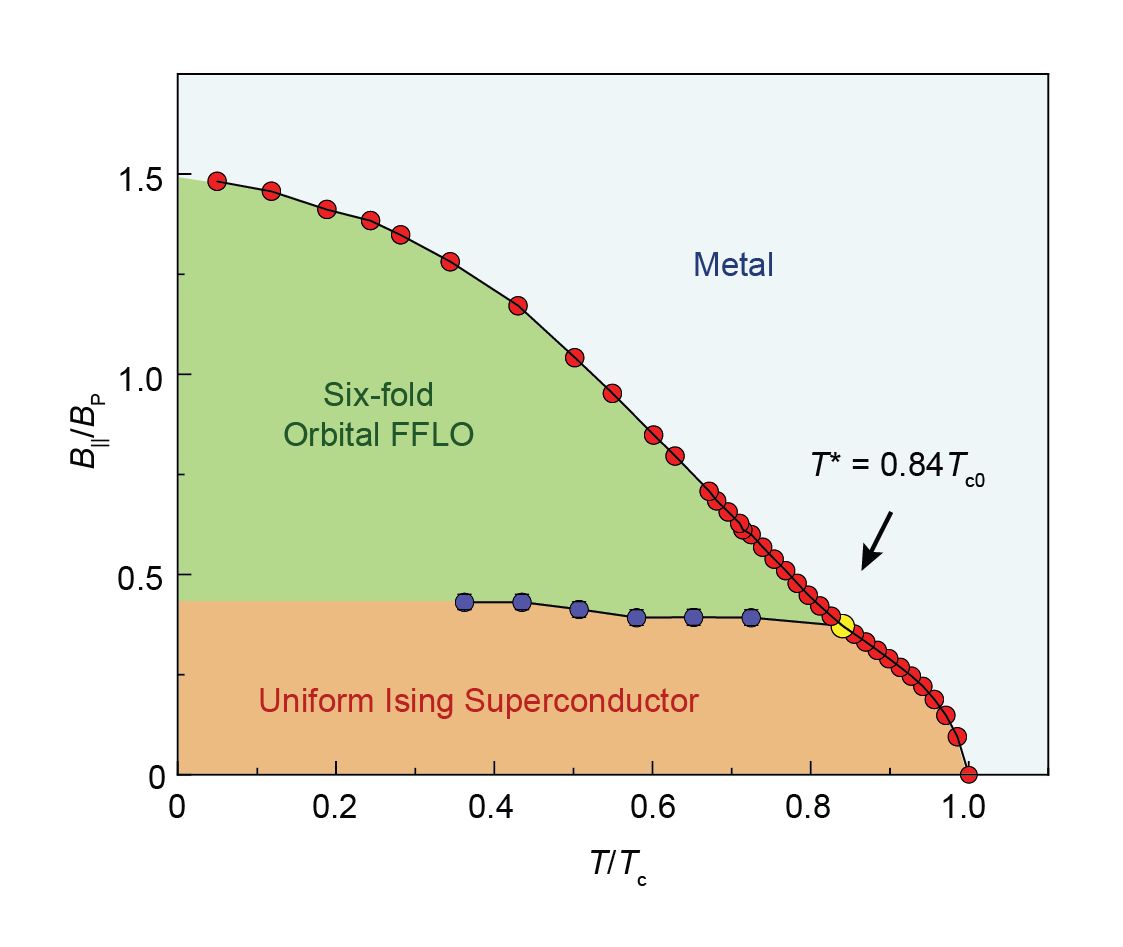Oleksandr Zheliuk, HFML Nijmegen.
Scientists from the University of Groningen, together with colleagues from HFML Nijmegen, the University of Twente, and the Harbin Institute of Technology (China), have discovered the existence of a superconducting state that was first predicted in 2017. In particular, they present evidence for a special variant of the so-called Fulde–Ferrell–Larkin–Ovchinnikov (FFLO) superconducting state, a discovery that could have significant applications in the field of superconducting electronics. To create the FFLO state – with a real-space variation in the pairing gap – in a conventional superconductor, a strong magnetic field is needed. But, the role played by the magnetic field needs careful tweaking. Typically, the FFLO state relies on the Zeeman effect that separates electrons in Cooper pairs based on the direction of their spins (magnetic moment). The orbital effect – the other role that normally destroys superconductivity – has previously thought to play no substantive role for the observation of an FFLO state. In an Ising superconductor with strong spin-orbit coupling, however, the Zeeman effect is suppressed and the in-plane upper critical field Bc2 will be determined in principle by orbital effects. This work provides a first clear fingerprint of an orbitally driven FFLO state in an Ising superconductor. The FFLO state in conventional superconductors requires low temperatures and a very strong magnetic field,
which makes it difficult to create. However, in an Ising superconductor, the state is reached with a weaker magnetic field and at higher temperatures. The high magnetic fields at HFML-EMFL were nevertheless important to enable researchers to establish the full phase diagram of this novel phenomenon. This new superconducting state still needs further investigation, however. For example, how does the kinetic momentum influence the physical parameters? Studying this state will provide new insights into superconductivity and may ultimately allow to control this state in devices such as transistors. Apart from its scientific importance, this work is also a nice example of an efficient international collaboration at an EMFL laboratory. State-of-the art devices processed in Groningen were brought to the high-field installation in Nijmegen, which allowed the researchers to explore the peculiar phase diagram of this superconductor at magnetic fields above 20 T, where the superconductivity is destroyed, providing convincing proof for the existence of FFLO state in the absence of strong Zeeman effects. Finally, the findings of this work, namely that the presence of Ising spin-orbit coupling in combination with an in-plane magnetic field shifts the transition to the FFLO state closer to the critical temperature and lower fields, may allow easier access to this exotic state for other experimental groups.

Figure: Phase diagram of the orbital FFLO state as determined from the temperature and field dependence of Bc2 in a parallel magnetic field.
Orbital Fulde–Ferrell–Larkin–Ovchinnikov state in an Ising superconductor, P. Wan, O. Zheliuk, N. F. Q. Yuan, X. Peng, L. Zhang, M. Liang, U. Zeitler, S. Wiedmann, N. E. Hussey, T. T. M. Palstra, and J. Ye, Nature 619, 46 (2023).
https://www.nature.com/articles/s41586-023-05967-z
Contact: oleksandr.zheliuk@ru.nl






